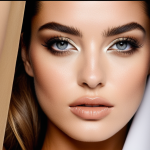Understanding the Importance of Adjustable Lighting in an Art Studio
The art studio design significantly benefits from adjustable lighting, which plays a crucial role in enhancing artistic work. Different artistic tasks demand varying degrees of light intensity and direction. Optimal lighting conditions can aid artists in better perceiving colors and details by mimicking natural light, thereby improving the accuracy and depth of their creations.
Adjustable lighting also impacts color perception and detail visibility, vital for artists working with different mediums. For instance, a painter might require bright, white light to accurately mix paints, while a sculptor may need softer lighting to highlight finer details. This nuanced lighting approach supports artists in achieving greater clarity and precision in their work.
Also to discover : Best Eco-Friendly Lighting Solutions to Illuminate Your Home Workspace
Moreover, creating a versatile workspace by incorporating adjustable lighting allows for greater flexibility, accommodating different art mediums. For instance, charcoal drawings might benefit from low, warm lighting, whereas detailed illustration work might require high-intensity, cool lighting. By integrating adjustable lighting, you create an environment that supports diverse artistic endeavors, enhancing productivity and creativity in the studio. This flexibility ensures that artists can adapt their lighting environment according to their specific needs, maximizing artistic output and fully utilizing their creative potential.
Key Considerations for Designing Your Art Studio Lighting
When designing lighting in an art studio, several factors ensure the space is both functional and inspiring. First, assess the studio layout to achieve optimal light distribution. Understanding the positioning of windows and walls is crucial; this natural light integration with adjustable lighting magnifies the desired effects on artworks.
In parallel : Brighten Your Long Hallway: Innovative and Energy-Efficient Lighting Solutions
The role of natural light in art cannot be overstated. It offers a dynamic environment that changes throughout the day, adding depth and vibrancy to creations. However, pairing it with adjustable options allows you to control intensity and focus, crucial as daylight naturally fades.
Another important aspect is evaluating the available space for fitting appropriate equipment. Select lighting fixtures accommodating the demands of your practice, considering flexibility in positioning and energy efficiency. Types like studio lamps can be tailored for specific mediums, supplementing the adjustable lighting in maintaining consistent light conditions.
Lighting considerations should also include the quality of light you wish to achieve. Using equipment that offers flexibility aids adaptability to different artistic processes while ensuring consistent results. Ultimately, a well-designed lighting setup profoundly influences the efficacy and aesthetics of your creative workspace, enhancing productivity and creativity.
Types of Lighting Fixtures for Art Studios
The variety of lighting fixtures available for art studios contributes to an effective and inspiring workspace. By understanding the roles of different types, you can tailor your lighting to suit various artistic tasks.
Task Lighting
Task lighting is essential for detailed work. It provides focused illumination directly on your artwork, ensuring accuracy in color and detail perception. For activities like sketching or painting, adjustable studio lamps or desk lamps are recommended. These lamps offer flexibility in positioning, enabling precise control over illumination levels and angles.
Ambient Lighting
Ambient lighting establishes the room’s overall atmosphere. It doesn’t focus on specific tasks but creates a comfortable and cohesive environment. Selecting adjustable ceiling fixtures or track lighting can allow you to maintain consistent lighting conditions throughout your studio.
Accent Lighting
Designed to highlight specific areas or items, accent lighting draws attention to particular elements of your art studio. It can enhance the visual appeal of displayed artworks by using spotlights or small lighting fixtures. Consider energy-efficient options like LED bulbs to achieve desired visibility with minimal power consumption.
Choosing the right combination of lighting ensures your art studio is equipped to support a diverse range of artistic practices while maintaining energy efficiency and aesthetic harmony.
Brightness and Color Temperature for Art Practices
Adjustable lighting is paramount when it comes to detailing brightness and color temperature in your art studio. These lighting specifications are the backbone of how your artwork is both created and perceived. It’s essential to determine the appropriate brightness levels to enhance your specific art medium, ensuring that every brushstroke or shading is clearly visible.
Different art forms have varying lighting needs. For painting, a higher brightness level can ensure the accurate rendition of colors, whereas sculpting may benefit from softer lighting, casting gentle shadows to accentuate details. It’s crucial to adjust brightness to match the necessity of the art medium at hand.
Color temperature is another vital consideration. It influences how the colors of your artwork appear. A warmer hue can bring out red and orange tones effectively, whereas cooler temperatures are ideal for highlighting blues and greens. Understanding this can significantly impact the emotional and visual perception of your art.
Incorporating a high color rendering index (CRI) is advisable, as it aids in maintaining color fidelity under artificial lighting, ensuring your artwork looks as intended. Ultimately, balancing brightness and color temperature will transform your workspace into a haven of creativity and accuracy.
Implementing Adjustable Lighting Solutions
Creating an adaptable lighting environment is key to mastering artistic work. Ideal setups combine correct light positioning and flexibility in lighting to enhance every art form’s nuances.
Firstly, mastering light positioning can drastically impact artwork perception. Position lights at angles that minimize shadows and highlight textures, aiding in precise detail visibility. Techniques should consider the studio’s natural light sources, as this integration optimizes overall illumination.
Utilizing dimmers and smart lighting options broadens control over lighting conditions. Dimmers allow for quick adjustments to light levels, while smart systems provide customizable lighting sequences via programmable settings.
Flexibility in lighting is vital, allowing for adaptations to various artistic processes. Adjusting light sources according to transitions between mediums ensures consistent color perception and detail visibility throughout all phases of an artist’s workflow.
To maximize the effectiveness of these adjustable light solutions, regularly evaluate and adapt lighting configurations to meet evolving creative needs. By embracing strategic lighting techniques, artists can cultivate a space that supports both creativity and precision, ultimately enriching the artistic experience. Adjustability and flexibility in lighting remain foundational to creating a studio that serves diverse artistic demands effectively.
Visual Aids and Examples for Ideal Lighting Setups
Understanding proper lighting arrangements is pivotal in optimizing an art studio’s functionality. To guide artists, lighting diagrams offer a clear visualization of effective configurations. These illustrations typically depict light fixture placements, helping maintain consistency in light distribution. Using such diagrams can significantly clarify how different lighting fixtures influence artistic tasks.
Case Studies and Studio Examples
Successful art studios often demonstrate the practical application of adjustable lighting. Examining these examples provides valuable insights into optimizing light positioning and intensity. Observing diverse setups can illustrate how specific lighting strategies enhance different art mediums. This analysis often inspires unique adaptations to individual creative spaces.
Recommendations for Visualizing Lighting Effects
Professionally curated manuals and lighting guides recommend visualizing the interplay of natural and artificial light. This visualization helps artists foresee potential lighting conflicts, ensuring seamless integration. Artists are encouraged to simulate various lighting conditions in their studio to evaluate effectiveness, further aligning studio design with their creative ambitions. Employing visualization aids in adapting lighting solutions, ensuring optimal conditions are achieved for any artistic endeavor.
Incorporating diagrams and case studies, alongside proactive experimenting, refines an art studio’s lighting design, maximizes artwork perception, and fosters a creative environment tailored to individual artistic needs.
Products and Tools for Perfecting Your Art Studio Lighting
Choosing the right lighting products can make or break your art studio’s atmosphere. Various lighting solutions cater to different needs, ranging from adjustable lighting fixtures to innovative gadgets that enhance studio equipment functionality.
Popular Lighting Products
Several adjustable lighting products have earned acclaim among artists. Brands like Philips Hue offer adaptive features, adjusting brightness and color temperature via smart controls, which are ideal for maintaining consistency across various artistic mediums.
Budget-Friendly vs. Premium Options
Artists often face the dilemma of balancing cost and quality. Budget-friendly lighting can provide essential functionality, though might lack in terms of customizability or lifespan. Premium lighting options, while demanding a higher initial investment, often deliver greater durability and versatility, with advanced features like spectrum control for superior color rendering.
Artist Insights and Recommendations
Many artists recommend dimmable LED studio lamps for their energy efficiency and precision. Such fixtures often boast a high color rendering index (CRI), crucial for accurately perceiving artwork hues. Additionally, products with flexible positioning arms and low energy consumption are frequently endorsed, ensuring your creative processes aren’t hampered by lighting inefficiencies. Thus, selecting the right products and tools plays a critical role in shaping an effective and inspiring art studio environment.



